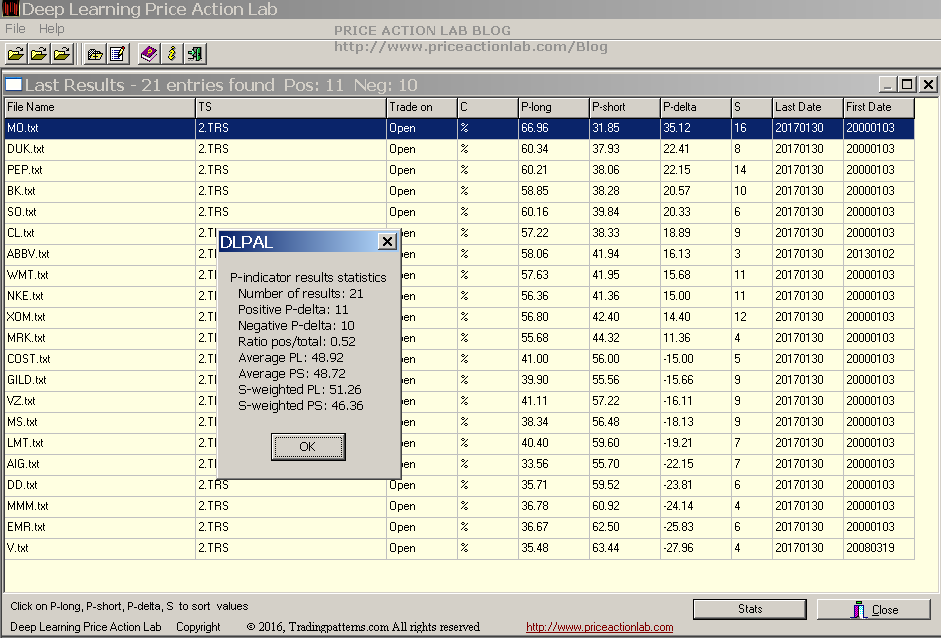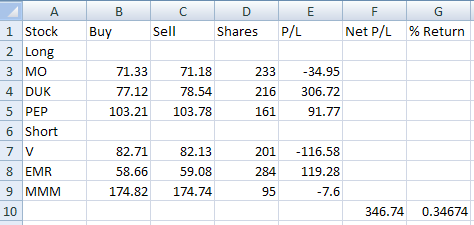Although long/short equity strategies are usually employed by large hedge funds, they are also used by some professional traders due to their advantages. In this article we discuss how such a strategy can be developed and implemented with DLPAL.
Long/short equity strategies involve taking both long and short positions so that a net profit is made while market exposure is minimized. If the strategy is designed properly, then usually during bull markets long positions tend to be more profitable than short and the other way around during bear markets. Therefore, the profitability of a long/short strategy does not depend on market direction. The strategy is called market neutral when allocations to long and short positions are equal. Needless to say that the strategy can also turn unprofitable if both long and short parts generate losses or losses from one part exceed gains from the other part for a sufficient period of time. For example, near major bear market bottom, short positions may lose more than what long positions gain due to short covering. Therefore, when testing these strategies on historical data, special attention must be paid to critical periods when there is potential for loss accumulation and high drawdown.
Note that in the limit where there are only two stocks involved, the long/short equity strategy reduces to a pair trade. This is a popular strategy among retail traders.
A long/short equity strategy with a bias involves varying levels of long or short exposure, for example 70/30 or 30/70.
Developing and executing long/short strategies with DLPAL PRO
DLPAL software calculates four indicators (also called features, attributes or predictors in machine learning) from historical data for a universe of stocks. The frequency of the data is usually daily but it can also be weekly. Long/short equity signals are then generated based on the values of the four indicators, P-long, P-short, P-delta and S. More details about these indicators can be found in the program manual.
A more detailed example can be found in this article. Another example of long/short equity signals is included below. This is the output of DLPAL software as of the close of January 30, 2017.
The results show S&P 500 stocks with long (P-long) and short (P-short) directional bias greater than 55% and significance S greater than 2. P-delta is P-Long minus P-short for each stock.
The long/short equity strategy considered here is based on selecting an equal number of stocks with highest and lowest P-delta, often multiplied by significance number.
For example, one could select MO, DUK and PEP for long and V, EMR, MMM for short in equal dollar amounts. Below is a spreadsheet based on 100K initial capital that calculates the number of shares for each stock, net P/L and return based on next day closing prices. The calculations include $0.01 per share of commission.
Note that all trades are placed at the open of the next trading day (MOO) after the DLPAL results are generated and are closed same day (MOC) unless there is a continuation signal for one of the stocks. The gain from this long/short equity trades in the above example was about 0.34% from open to close.
Backtesting long/short equity strategies
Backtesting of long/short equity strategies may be performed by using the historical features data files generated by DLPAL PRO.
You can download a demo of DLPAL and DLPAL PRO here. For more articles about DLPAL and DLPAL PRO click here. Note that the Basic and PRO version personal license limit the number of securities that can be included in a scan, p-indicator and p-indicator history workspace to 20. The Basic and PRO version professional license limit the number of securities that can be included in a scan, p-indicator and p-indicator history workspace to 100. This limit does not exist in unlimited license.
We have also just announced DLPAL LS, a version of the program specifically designed for hedge funds. More details can be found here.
If you have any questions or comments, happy to connect on Twitter: @priceactionlab
Note that the author of this website is not a registered financial adviser. Before contacting us to subscribe to our long/short equity signal service please read our Disclaimer and Terms and Conditions. Acceptance of the terms and conditions is required before subscribing.








